Toyota Announces Pricing for 2022 Tundra

Well, they’ve announced pricing for the non-hybrid models, anyway. Apparently putting a value on positive and negative electrons takes a bit more time. Nevertheless, we now know precisely the amount that will be hoovered from your bank account to get into a new-for-’22 Tundra.
As you’d expect, it’s a jump from the old truck.
Kicking things off, and paying homage to our old Ace of Base series, is the entry-level SR trim. When fitted with the 3.5-liter, twin-turbo V6 engine and rear-wheel drive, it’ll cost $35,950 when spec’d with the Double Cab and 6.5-foot box. This is a $1,925 increase from the old truck. Upgrading to the 8.1-foot box will cost just $330 and should be considered unless you feel its proportions are too derpy. Or you have a small driveway. The most expensive two-wheel-drive, non-hybrid Tundra will be a snazzy 1794 Edition CrewMax with the 6.5-foot bed costing $58,020. The same configuration for 2021 models is listed today at $50,095 on Toyota’s consumer website. All these prices are sans destination and TruCoat.
If it’s four-wheel drive you seek, be prepared to shell out at least $38,950 for an SR Double Cab with the shorter box. That’s a $3,000 walk from the 4×2, for all of youse who failed basic math. A typical volume trim like the SR5 CrewMax with the 5.5-foot bed rings the bell at $45,805. The 4×4 range-topper is again a 1974 Edition trim, same as on the two-wheel-drive side of the ledger, again adding three grand to its sticker and winding up at $61,020. The ’21 version of this spec is listed at $53,145.
Various and sundry options packages can be layered on top of most trims, including the likes of a TRD Off-Road package which adds skid plates and a rear locker (and is different than the hybridized TRD Pro trim) and an assortment of Premium packages featuring creature comforts like wireless device charging. Don’t forget: The base SR has a detuned version of the non-hybrid 3.5L twin-turbo V6, giving up 41 horses and a not-inconsiderable 74 lb-ft of torque compared to the full-fat versions in the SR5 trims and beyond where it makes 389 horses and 479 units of twist.
While it’s not always an apples-to-apples comparison thanks to a myriad of differences, it is safe to say the new Tundra is marginally more expensive than an equivalent truck from Ram, Ford, or GM. The latter two also have Regular Cab options the Toyota lacks, so watch out for any loud dealer ads proclaiming their lot to have the cheapest truck in town.
[Image: Toyota]

Matthew buys, sells, fixes, & races cars. As a human index of auto & auction knowledge, he is fond of making money and offering loud opinions.
More by Matthew Guy
Latest Car Reviews
Read moreLatest Product Reviews
Read moreRecent Comments
- Jeff One less option will be available for an affordable midsize sedan. Not much can be done about GM discontinuing the Malibu. GM, Ford, and Stellantis have been discontinuing cars for the most part to focus on pickups, crossovers, and suvs. Many buyers that don't want trucks or truck like vehicles have moved onto Japanese and South Korean brands. Meanwhile large pickups and suvs continue to pile up on dealer lots with some dealers still adding market adjustments to the stickers. Even Toyota dealers have growing inventories of Tundras and Tacomas.
- Lorenzo This car would have sold better if there was a kit to put fiberglass toast slices on the roof.
- Lorenzo The Malibu is close to what the 1955 Bel Air was, but 6 inches shorter in height, and 3 inches shorter in wheelbase, the former making it much more difficult to get into or out of. Grandma has to sit in front (groan) and she'll still have trouble getting in and out.The '55s had long options lists, but didn't include a 91 cubic inch four with a turbo, or a continuously variable transmission. Metal and decent fabric were replaced by cheap plastic too. The 1955 price was $1765 base, or $20,600 adjusted for inflation, but could be optioned up to $3,000 +/-, or $36,000, so in the same ballpark.The fuel economy, handling, and reliability are improved, but that's about it. Other than the fact that it means one fewer sedan available, there's no reason to be sorry it's being discontinued. Put the 1955 body on it and it'll sell like hotcakes, though.
- Calrson Fan We are already seeing multiple manufacturers steering away from EVs to Hybrids & PHEVs. Suspect the market will follow. Battery tech isn't anywhere close to where it needs to be for EV's to replace ICE's. Neither is the electrical grid or charging infrastructure. PHEV's still have the drawback that if you can't charge at home your not a potential customer. I've heard stories of people with Volts that never charge them but that's a unique kind of stupidity. If you can't or don't want to charge your PHEV then just get a hybrid.
- AZFelix The last time I missed the Malibu was when one swerved into my lane and I had to brake hard to avoid a collision. 1 out of 5⭐️. Do not recommend.



















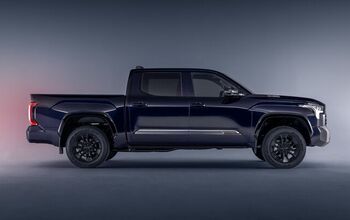

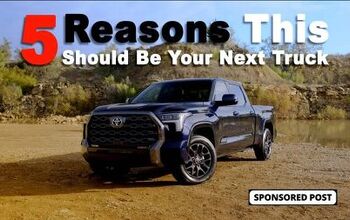
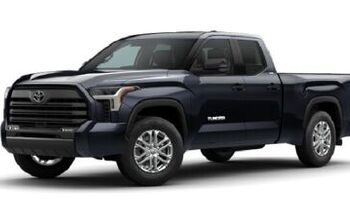
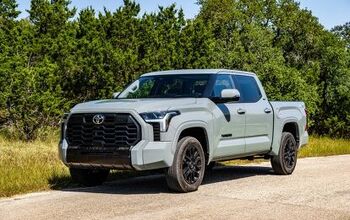





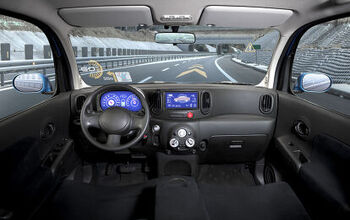




Comments
Join the conversation
Ugliness aside, the lack of a V8 engine option rules this truck out for me. I am still not sold on the idea that a downsized turbo engine cuts it over the long term. Whenever the market returns to sanity again (and I fully realize that may take another couple years), I am left to choose between the F150 and the Ram. The F150 is the easy choice, but I am going to give the Ram a chance.
Looks like a heritage edition. Good gosh the Japanese have styled so many ugly yet charming vehicles. F10? This thing is just ugly